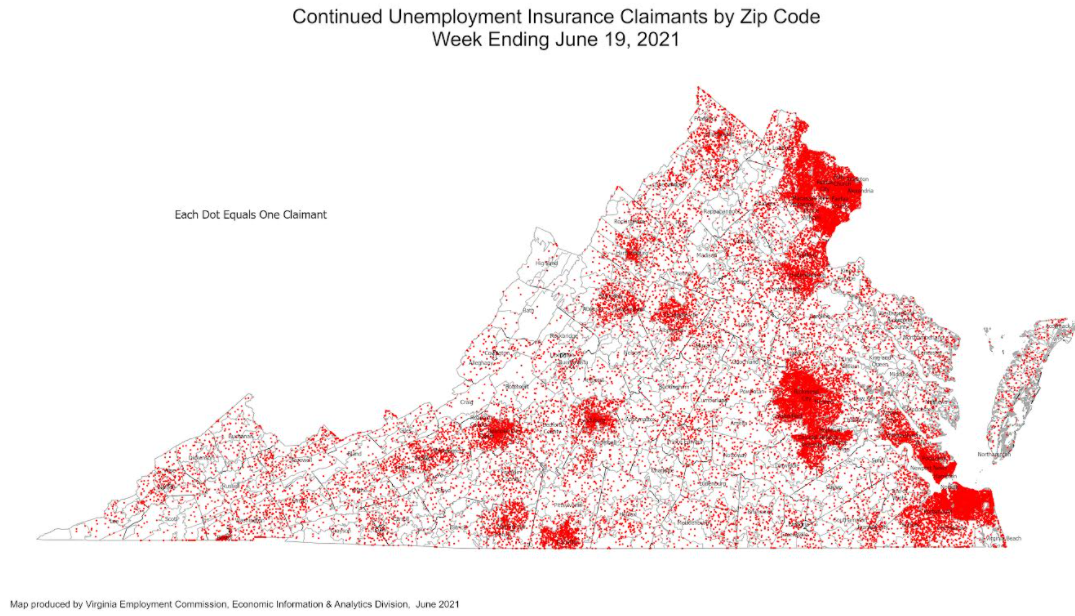June 24, 2021
RICHMOND—The Virginia Employment Commission (VEC) announced that the number of initial claims filed during the most recent filing week were 73% lower than during the comparable week in 2020.
For the filing week ending June 19, the figure for seasonally unadjusted initial claims in Virginia was 6,905. The latest claims figure was a decrease of 944 claimants from the previous week. This brought the total number of claims filed since the March 21, 2020 filing week to 1,712,876, compared to the 477,600 average filed during the previous three economic recessions since 1990.
For the most recent filing week, continued weeks claimed totaled 42,878, which was a decrease of 1,915 claims from the previous week, but 89% lower than the 375,579 continued claims from the comparable week last year. Over half of claims that had a self-reported industry were in the accommodation and food services, administrative and waste services, retail trade, and health care and social assistance industries. The continued claims total is mainly comprised of those recent initial claimants who continued to file for unemployment insurance benefits during the COVID-19 pandemic.
For additional information on who is claiming unemployment insurance in Virginia, access the VEC’s U.I. claims data dashboard (https://www.vec.virginia.gov/ui-claims-dashboard) that is updated no later than the following Monday after the weekly claims press release.

Nationwide, in the week ending June 19, the advance figure for seasonally adjusted initial claims was 411,000, a decrease of 7,000 from the previous week’s revised level. The previous week’s level was revised up by 6,000 from 412,000 to 418,000. The advance number of actual initial claims under state programs, unadjusted, totaled 393,078 in the week ending June 19, a decrease of 14,720 (or -3.6 percent) from the previous week. There were 1,447,127 initial claims in the comparable week in 2020. Looking at preliminary data, most states reported decreases on a seasonally unadjusted basis. Illinois’s preliminary weekly change (-3,605) was the largest decrease. California’s preliminary weekly change (-3,300) was the second largest decrease. Ohio’s preliminary weekly change (-3,233) was the third largest decrease. Florida’s decline was the fourth largest decrease (-3,104). Virginia’s decrease (-398) was the 24th largest decrease.




 PDF of Press Release
PDF of Press Release 